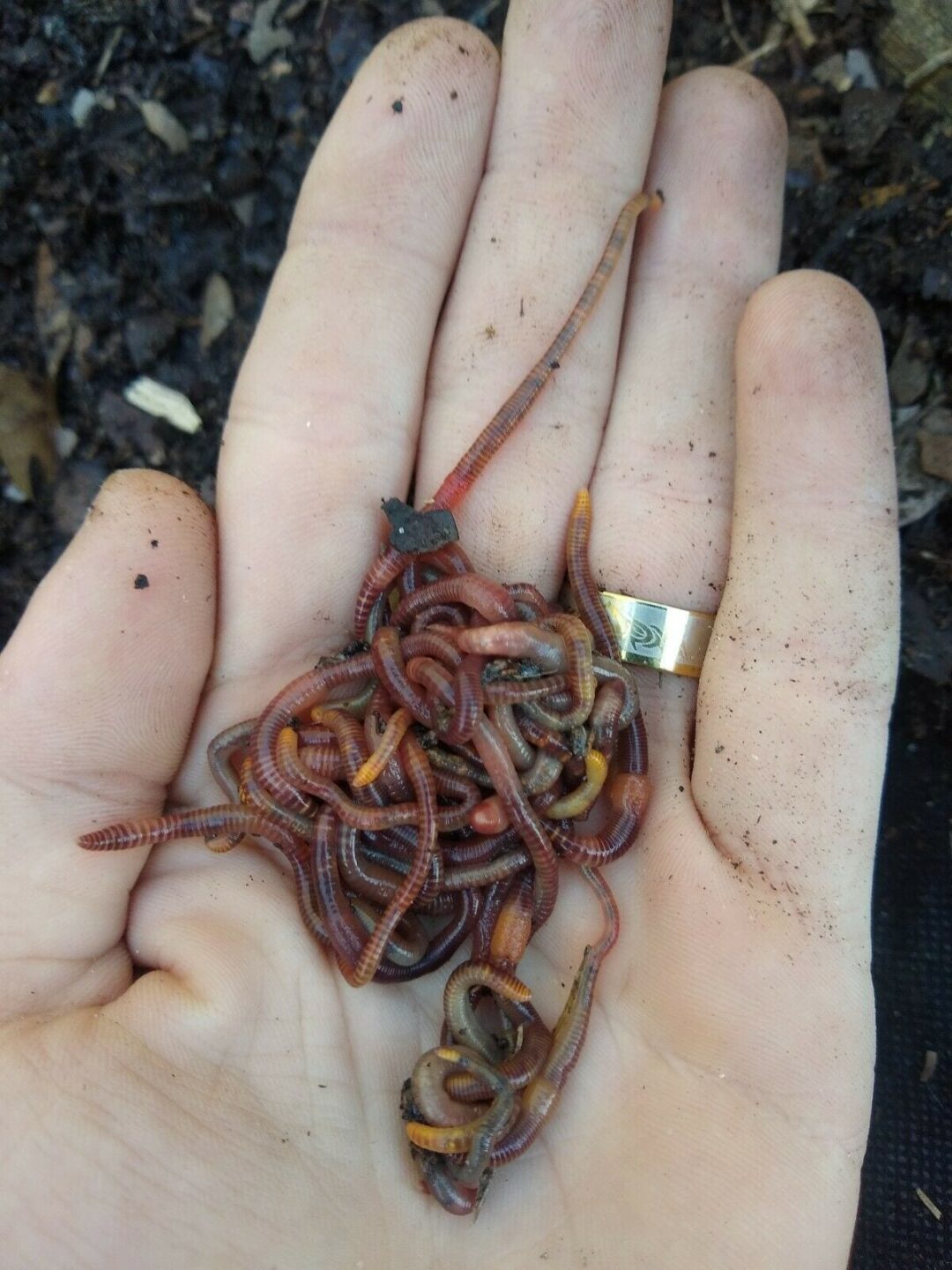Discover Why Lake Hickory Bait is the Best Choice for Yard Care
Discover Why Lake Hickory Bait is the Best Choice for Yard Care
Blog Article
Open the Secrets of Red Wigglers: Your Guide to Composting Success
The integration of red wigglers right into composting techniques offers a significant chance for enhancing dirt wellness and advertising sustainability. These organisms are not just reliable recyclers of natural waste; they offer a myriad of benefits that can transform garden administration. Understanding their demands and behaviors is critical for enhancing their possibility, from establishing up a proper worm bin to feeding them the best products. As we explore the essential elements of successful vermicomposting, one may question exactly how these tiny animals can cause a much more vivid and efficient yard ecological community.

What Are Red Wigglers?
(Red Wiggler Express)Red wigglers, scientifically understood as Eisenia fetida, are a types of earthworm mostly used in composting because of their remarkable capacity to decay raw material efficiently. These worms are defined by their reddish-brown coloration and a fractional body, generally determining in between 3 to 4 inches in size. Unlike various other earthworm types, red wigglers grow in abundant, organic settings, making them suitable for vermicomposting systems.
Indigenous to North America, they are frequently discovered in decomposing leaves and garden compost stacks, where they play a crucial role in nutrient recycling. Their adaptation to staying in a damp, aerobic environment allows them to consume big amounts of natural waste, breaking it down right into nutrient-rich spreadings that enhance soil health and wellness.
Red wigglers replicate rapidly, with a single worm qualified of generating numerous cocoons every week, each including several hatchlings. This rapid recreation rate contributes to their efficiency in composting operations. They prefer temperatures between 60 ° F and 80 ° F, and their activity level enhances dramatically within this range, additional assisting in the decay process. Recognizing the biology and habits of red wigglers is necessary for optimizing their possibility in composting applications.
Advantages of Making Use Of Red Wigglers
Taking advantage of the power of red wigglers in composting provides many benefits that boost soil wellness and advertise lasting waste administration. These amazing microorganisms successfully break down raw material, changing kitchen area scraps and lawn waste right into nutrient-rich vermicompost. This completed product is remarkably valuable for plant development, as it boosts dirt framework, boosts wetness retention, and enhances nutrient availability.

(Red Wiggler Express)In addition, the presence of red wigglers in your composting system can accelerate the composting procedure, creating premium compost in a portion of the time compared to typical techniques. The castings generated by these worms are likewise teeming with valuable bacteria that even more improve the dirt ecosystem.
Establishing Your Worm Bin
Developing an efficient worm bin is an uncomplicated process that can dramatically improve your composting initiatives. The primary step is choosing a suitable container. Worm containers can be made from plastic storage space bins, wood boxes, or commercially readily available worm bins. Make sure the bin has appropriate drainage and ventilation openings to maintain ideal moisture levels and air movement.
Following, prepare the bedding product, which offers as the worms' habitat. A mix of shredded paper, cardboard, and coconut coir works well, offering a comfortable setting for the worms. Go for a bed linen depth of regarding 4-6 inches. Dampen the bed linen lightly, guaranteeing it looks like a damp sponge without excess water merging near the bottom.

Feeding Your Red Wigglers
To make sure the health and productivity of your red wigglers, it is vital to provide them with a balanced diet plan that satisfies their nutritional requirements. Red wigglers grow on a varied selection of natural products, which not just provide essential nutrients but also promote reliable composting.
Start by incorporating cooking area scraps such as veggie peels, fruit cores, and coffee premises. Avoid citrus fruits, onions, and garlic, as these can be detrimental to worm health. Furthermore, present shredded paper, cardboard, and completely dry leaves to create a well-aerated environment.
Feeding regularity should be monitored; usually, worms can take in half their body weight in food weekly. It is vital to prevent overfeeding, as excess food can result in undesirable odors and bring in parasites. A great practice is to include food in small quantities, permitting worms to process it before introducing more.
Preserving dampness levels is additionally vital; the bedding ought to perspire however try these out not soaked. Be sure to on a regular basis check the temperature and pH levels of the bin to make sure an optimum setting for your red wigglers, inevitably enhancing their composting performance.
Harvesting and Using Garden Compost
An effective composting procedure with red wigglers finishes in the abundant, dark compost called vermicompost, which can substantially boost dirt health and wellness and plant growth. Collecting this nutrient-dense product commonly takes place every three to six months, depending upon the size of your system and the amount of natural issue being refined.
To harvest, delicately different the compost from the worms and any undecomposed materials. One effective technique includes moving the components of the container away and including fresh bed linens and food to the vacant room, motivating the worms to migrate. After a couple of days, the compost can be gathered from the contrary side.
It is necessary to utilize vermicompost properly to optimize its benefits. By including vermicompost into your horticulture program, you not only recycle organic waste however additionally produce a successful ecological community that sustains sustainable gardening techniques.
Verdict
In summary, red wigglers function as exceptional allies in composting initiatives, changing organic waste right into nutrient-rich vermicompost (Red Wiggler Express). Their special biological characteristics and effective waste processing capacities contribute substantially to lasting gardening methods. By recognizing the optimal problems for their habitat, feeding demands, and compost harvesting methods, garden enthusiasts can enhance dirt wellness and promote plant vitality. Accepting vermicomposting not only lowers landfill waste however also promotes a much more environmentally liable strategy to gardening and source monitoring.
Report this page